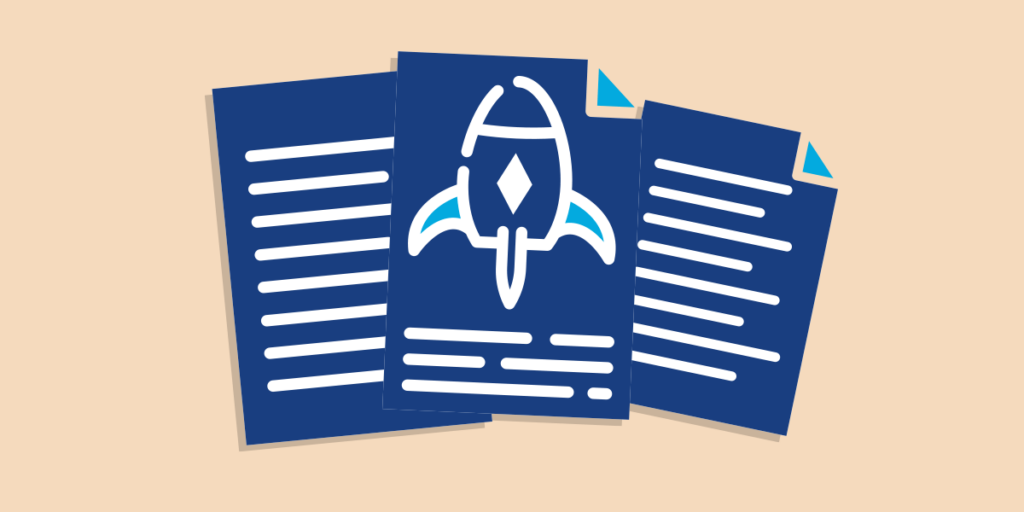ITIL documentation refers to the process of systematically recording and organizing information relevant to IT service management (ITSM). This may include policies, processes, procedures, service level agreements (SLAs), incident reports, change requests, etc. This ITIL documentation is a foundation for ITIL adoption. It provides a reference point for decision-making and enables consistent, effective IT service delivery and support.
With proper ITIL documentation, IT organizations can avoid common pitfalls such as miscommunication, IT service delivery and support inconsistencies, and lack of accountability. Another important aspect of ITIL documentation is that it provides a historical record of the IT organization’s activities, which can be invaluable for troubleshooting, auditing, and continual improvement.
ITIL documentation can take many forms. This article shares some examples, along with five ways it can boost ITSM success. #ITSM #ServiceDesk Share on XTypes of ITIL Documentation
ITIL documentation can take many forms. Here are some examples of the ITIL documentation used in ITIL processes:
- Service catalogs – These list all the services provided by an IT organization. They include detailed descriptions of each service, their availability, and how they can be accessed.
- SLAs – These formal agreements between IT service providers and external or internal customers, outline the expected level of service and are key ITIL documentation. They include metrics for measuring service performance, responsibilities, and procedures for dealing with service failures.
- Change management/enablement documents – These are used to manage IT services or infrastructure changes. They include requests for change (RfCs), records of impact analysis, approval statuses, and post-implementation reviews.
- Incident and problem management records – This type of ITIL documentation records incidents (disruptions to service) and problems (the underlying causes of one or more incidents).
- Software documentation – This explains how to operate and maintain the software tools used in ITIL processes or managed by ITSM teams. It can include user manuals, system documentation, installation guides, and troubleshooting guides.
- Process documentation – This includes documents that outline the processes and procedures for various ITIL practices, such as incident management, service configuration management, and continual improvement.
- Knowledge base articles – These are collections of articles or documents that provide solutions to common problems, FAQs, and how-to guides. A well-maintained knowledge base that includes ITIL documentation allows IT staff and end-users to resolve issues quickly and independently.
How it Boosts ITSM Success
- Providing a Central Information Repository. One of the ways ITIL documentation can boost ITIL success is by serving as a centralized information repository. This means that all relevant data and information about ITSM is stored in a single, easily accessible location.
This helps prevent information silos and ensures that all team members have access to the same, up-to-date information. Such a centralized information repository can greatly improve the effectiveness of ITSM.
For instance, when an incident occurs, team members can quickly refer to the ITIL documentation to understand the nature of the issue, identify possible solutions, and implement them effectively. This can significantly reduce the related downtime and improve the quality of service delivery. Moreover, a centralized information repository facilitates knowledge sharing among team members. This can help foster a continual learning and improvement culture, which is key to ITIL success. - Facilitating Effective Training and Onboarding. ITIL documentation provides new team members with a comprehensive overview of ITSM processes, policies, and procedures. This can help them quickly understand their roles and responsibilities and how they fit into the larger ITSM ecosystem.
Furthermore, documentation can be a training tool for existing team members. By regularly reviewing and updating the ITIL documentation, team members can stay abreast of the latest developments in ITSM and hone their skills accordingly.
This can help ensure that the organization’s IT services remain fit for purpose. In addition, ITIL documentation can serve as a reference tool. Whenever team members encounter an issue or need clarification on a certain procedure, they can refer to the documentation. This can help improve their problem-solving skills and reduce their reliance on other team members, boosting productivity and efficiency. - Enabling Performance Tracking and Analysis. ITIL documentation can boost ITSM success by allowing organizations to track and analyze their performance. Organizations can gain a clear picture of their performance over time by documenting key performance indicators (KPIs), incident reports, SLAs, and other relevant data. This can help them identify trends, pinpoint areas of improvement, and develop strategies to enhance their performance.
Moreover, performance tracking and analysis can help organizations stay accountable to their customers. By regularly reviewing and updating their performance data, they can ensure that they meet their service level agreements and provide high-quality services to their customers. - Maintaining Compliance Records. Compliance is a critical aspect of ITSM in regulated industries. Maintaining compliance records is another way ITIL documentation can boost ITSM success. It provides evidence of the organization’s adherence to various regulations and standards, such as data protection laws and IT security standards.
Moreover, it enables organizations to demonstrate their commitment to quality service delivery and continual improvement, boosting customer confidence and loyalty. - Building a Knowledge Base for Decision Making. ITIL documentation can boost ITSM success by serving as a knowledge base for decision-making. By systematically documenting their policies, procedures, incident reports, change requests, and other relevant data, organizations can build a rich knowledge base to inform their decision-making process.
For instance, they can use their incident reports to identify common issues and develop prevention strategies. Similarly, they can use their change request data to understand the impact of various changes on their service delivery and adjust their strategies accordingly.
Best Practices for Effective ITIL Documentation
Here are a few best practices that can help you use ITIL documentation more effectively in your IT organization.
- Focus on Simplicity and Clarity. With ITIL documentation, documents are often accessed frequently and used for day-to-day operations, including urgent incidents. Documents should, therefore, be written in a straightforward and easily understandable language, avoiding technical jargon wherever possible. This approach ensures that all team members can comprehend the ITIL documentation regardless of their technical expertise.
Clarity in ITIL documentation also helps minimize misunderstandings and errors when using ITIL processes. Use bullet points, tables, and diagrams where appropriate to achieve simplicity and clarity. Also, focus on the essential information. Avoid overloading documents with unnecessary details, which can lead to confusion and reduce the effectiveness of the documentation. - Implement a Regular Review and Update Process. With the fast-paced nature of the IT industry, processes, technologies, and standards change frequently. Therefore, updating the ITIL documentation to reflect these changes accurately is vital.
Regularly updating and reviewing helps ensure the ITIL documentation remains relevant and accurate. It involves reviewing the documents periodically, checking for errors, inconsistencies, or outdated information, and making the necessary corrections. It also involves adding new information or modifying existing content to keep up with the changes. - Use a Centralized Repository for All ITIL Documentation. Having a centralized repository for all ITIL documentation brings several benefits. First, it facilitates easy access to the documents. A centralized repository also promotes consistency.
It ensures that all team members use the same document version, preventing confusion and errors arising from outdated or incorrect versions. Moreover, a centralized repository aids in security and control, including who can access, edit, or delete them. - Involve Team Members in the Documentation Process. Involving team members in the documentation process is a best practice that can significantly boost ITIL success. When team members contribute to the ITIL documentation, they feel a sense of ownership and commitment.
This encourages them to use and maintain the ITIL documentation effectively. Involvement also leads to better-quality documentation. Team members can provide valuable insights and suggestions that can improve the ITIL documentation.
What would you add to this article on how ITIL documentation boosts ITSM success?
Please use the website search capability to find more helpful ITSM articles on topics such as customer service, improving business processes, service level agreement (SLA) creation, real-time performance measurement, project management, meeting business objectives, reducing response times and resolution times, teh configuration management database (CMDB), meeting business goals, performance metrics and time frames, customer experience, knowledge management, process improvement, user experience, software development, managing cloud services, and improving business operations in the long term.

